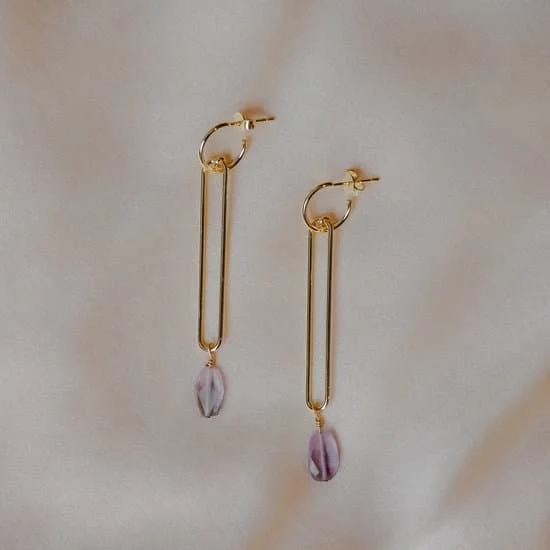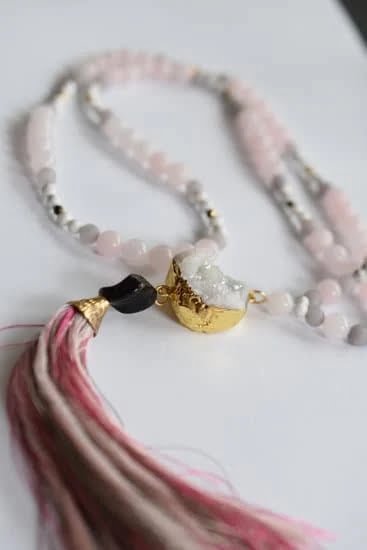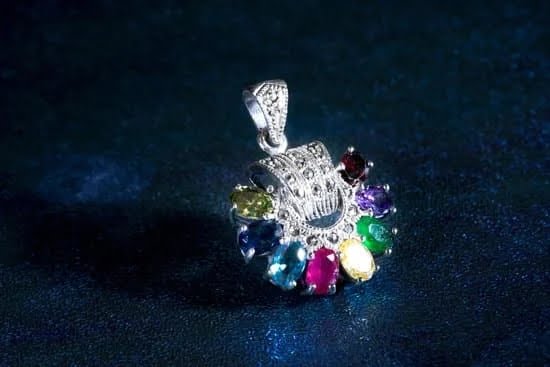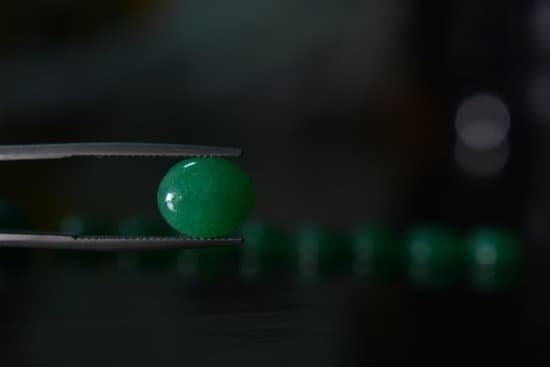Gold plated jewelry has become a popular choice for those looking to accessorize with the luxury of gold without the hefty price tag. However, many people often have questions about how to care for and maintain their gold plated pieces. One common query that surfaces is, “Can you wet gold plated jewelry?” In this article, we will delve into the world of gold plated jewelry, addressing misconceptions and providing valuable tips on proper maintenance.
Understanding what gold plated jewelry is and how it differs from solid gold pieces is crucial in learning how to best care for it. We will explore the process of gold plating and its composition, shedding light on why it requires special attention when it comes to cleaning and storage. It’s important to recognize that despite its luxurious appearance, gold plated jewelry is more delicate than solid gold and therefore demands diligent care.
We will also tackle common myths and misconceptions surrounding gold plated jewelry, particularly its ability to withstand exposure to water. Addressing these fallacies will help dispel any confusion about the dos and don’ts of caring for gold plated pieces. Furthermore, we will examine the potential effects of water exposure on such jewelry, ultimately answering the burning question: Can you wet gold plated jewelry?
Understanding Gold Plated Jewelry
Gold plated jewelry is made by covering a base metal, such as brass or sterling silver, with a thin layer of gold. The gold plating process involves electroplating the base metal with a layer of gold using an electric current. This results in a piece of jewelry that has the appearance of solid gold, but at a much more affordable price point.
It’s important to note that gold plated jewelry is not the same as solid gold jewelry. While solid gold jewelry is made entirely of gold, gold plated jewelry only has a thin layer of gold on the surface. This key difference can impact how each type of jewelry should be cared for and maintained.
Because the layer of gold on gold plated jewelry is relatively thin, it is more susceptible to damage from scratching, tarnishing, and exposure to water. For this reason, it’s crucial to handle and clean gold plated jewelry with care in order to preserve its appearance and luster for as long as possible.
| Gold Plated Jewelry | Solid Gold Jewelry |
|---|---|
| Base metal covered in thin layer of gold | Made entirely of gold |
| More affordable price point | Higher price due to higher gold content |
| Thinner layer susceptible to damage | Durable and less prone to damage |
Caring for Gold Plated Jewelry
Gold plated jewelry is a popular and affordable option for accessorizing, but it does require some special care to maintain its appearance. Properly cleaning and storing gold plated jewelry can help to prevent tarnishing and damage, ensuring that it continues to look beautiful for years to come.
Proper Cleaning Techniques
When it comes to cleaning gold plated jewelry, less is more. Harsh chemicals and abrasive cleaners can damage the delicate gold plating, so it’s best to stick with gentle cleaning methods. A soft, lint-free cloth can be used to gently buff away any dirt or smudges. For tougher grime, a mild soap and water solution can be used, but it’s important to dry the jewelry thoroughly afterward to prevent water spots.
Storing Gold Plated Jewelry
Proper storage is also crucial for maintaining the luster of gold plated jewelry. When not being worn, it’s best to store gold plated pieces in a cool, dry place away from direct sunlight. Storing them in a jewelry box or soft pouch can help to prevent scratches and tangles with other items.
Avoiding Contact With Water
Although occasional exposure to water may not immediately ruin gold plated jewelry, excessive moisture can cause the plating to wear off more quickly. It’s important to remove gold-plated jewelry before swimming or showering, as prolonged exposure to water can lead to tarnishing and discoloration.
Additionally, it’s essential to properly dry the jewelry if it does come into contact with water accidentally. Following these tips can help ensure that your gold plated jewelry maintains its beauty for as long as possible.
Common Misconceptions
Gold Plated Jewelry Is Not Waterproof
One of the most common misconceptions about gold plated jewelry is that it is waterproof. Many people assume that because the item has a layer of gold on its surface, it can withstand exposure to water without any damage. However, this is not entirely true. While gold plating does provide some level of protection against tarnishing and corrosion, it does not make the jewelry completely waterproof.
Effects of Water Exposure on Gold Plated Jewelry
When gold plated jewelry comes into contact with water, especially if it is submerged or exposed for an extended period, the water can cause damage to the thin layer of gold. This can result in tarnishing, discoloration, or even peeling of the gold layer over time. Additionally, certain minerals and chemicals present in water can also react with the base metal underneath the gold plating, further accelerating deterioration.
Recommended Precautions
To maintain the quality and appearance of your gold plated jewelry, it is best to avoid exposing it to water as much as possible. When washing your hands or taking a shower, it’s advisable to remove any gold plated rings, bracelets, or necklaces to minimize their contact with water.
In situations where some exposure cannot be avoided, such as wearing jewelry on a hot day where you may sweat more than usual, ensure that you dry the item thoroughly after it gets wet to prevent any potential damage. These simple precautions can help prolong the lifespan and luster of your gold plated jewelry.
As for cleaning your pieces – let me tell you about what products work best.
Can You Wet Gold Plated Jewelry
Gold plated jewelry is a popular choice for those looking for affordable and stylish accessories. However, many people often wonder if it is safe to get gold plated jewelry wet.
This question arises because there is a misconception that any exposure to water can quickly ruin the gold plating on jewelry. In this section, we will explore the potential effects of water exposure on gold plated jewelry and provide guidance on whether or not it is safe to get it wet.
While there may be some truth to the idea that constant or prolonged exposure to water can damage gold plated jewelry, simply getting it wet during daily activities such as washing hands or taking a shower should not cause any harm. Gold plating involves a thin layer of gold being bonded to a base metal, such as brass or copper.
This layer of gold is delicate and can wear off over time with frequent exposure to moisture, but simple contact with water in day-to-day situations should not pose a significant risk.
To ensure the longevity of your gold plated jewelry, it is important to take proper care when it comes into contact with water. After coming into contact with moisture, gently dry the jewelry using a soft cloth before storing it away. Avoid exposing your gold plated pieces to harsh chemicals like chlorine or abrasive materials that could scratch the surface and cause the plating to wear off more quickly.
It’s important to note that while occasional contact with water is generally safe for gold plated jewelry, prolonged exposure or consistent wear in damp environments can still lead to deterioration over time. To maintain its luster and appearance, it’s best to minimize its contact with water whenever possible and follow proper storage and maintenance practices.
Proper Maintenance
Gold plated jewelry can add a touch of elegance to any outfit, but it requires proper care and maintenance to retain its beauty. Here are some best practices for keeping your gold plated jewelry looking its best:
- Store your gold plated jewelry in a separate compartment to prevent scratching from other pieces.
- Avoid exposing your gold plated jewelry to harsh chemicals, such as perfumes, lotions, and hairsprays, as these can cause the plating to tarnish or wear off.
- Remove your gold plated jewelry before swimming or bathing to prevent damage from chlorine, salt water, and harsh soaps.
When it comes to cleaning your gold plated jewelry, gentle care is key. Use a soft, lint-free cloth to gently wipe away any dirt or residue. If additional cleaning is needed, you can use a mild soap and warm water. Be sure to dry the piece thoroughly with a clean cloth before storing it.
Remember that regular maintenance is essential for preserving the luster of your gold plated jewelry. By following these best practices, you can keep your pieces looking beautiful for years to come.
Recommended Products
When it comes to cleaning gold plated jewelry, it’s important to use the right products and tools to avoid damaging the delicate plating. Here are some recommended products and tools that are safe for use on gold plated jewelry:
1. Gentle Cleaning Solution: Using a mild dish soap or baby shampoo mixed with warm water can help remove dirt and oil from gold plated jewelry without causing any damage.
2. Soft Cloth or Brush: When cleaning gold plated jewelry, it’s essential to use a soft cloth or a gentle brush to avoid scratching the surface. A microfiber cloth or a soft-bristled toothbrush can be used to gently clean the jewelry.
3. Jewelry Polishing Cloth: A specially designed jewelry polishing cloth can help restore the shine of gold plated jewelry without stripping off the thin layer of gold. Be sure to use a clean section of the cloth for each piece of jewelry to prevent cross-contamination.
4. Non-Abrasive Cleaner: It’s crucial to avoid using harsh chemicals or abrasive cleaners on gold plated jewelry, as they can strip away the thin layer of gold. Opt for non-abrasive cleaners specifically formulated for delicate jewelry.
5. Distilled Water: When rinsing off cleaning solution from gold plated jewelry, using distilled water can help prevent mineral deposits and water spots from forming on the surface.
By using these recommended products and tools, you can safely clean and maintain your gold plated jewelry without causing any damage to its delicate plating. Remember to handle your jewelry with care and avoid exposing it to harsh chemicals or rough surfaces that can scratch or wear down the gold plating over time.
Conclusion
In conclusion, as we have discussed in this article, gold plated jewelry can be wet, but it requires careful maintenance to ensure its longevity and luster. While it may seem delicate, gold plated jewelry is actually quite durable if cared for properly. Understanding the process of gold plating and differentiating it from solid gold jewelry can help clear up misconceptions about its ability to withstand water exposure.
When it comes to caring for gold plated jewelry, it is important to avoid harsh chemicals and abrasives while cleaning. Instead, opt for gentle cleansing methods using mild soap and water, or specific cleaning products designed for use on delicate jewelry. Proper storage is also essential to prevent damage from moisture and air exposure.
Ultimately, with the right knowledge and care, gold plated jewelry can retain its beauty for years to come. By following the tips provided in this article, you can safely wet your gold plated jewelry without worrying about causing irreparable damage. Remember that maintenance is key when it comes to preserving the appearance of your cherished pieces.
Frequently Asked Questions
How Long Does Gold-Plated Jewelry Last?
Gold-plated jewelry can last for a varying amount of time, depending on factors such as the thickness of the gold layer, how often it’s worn, and how it’s cared for. Generally, with proper care, gold-plated jewelry can last anywhere from a few months to a few years before the gold layer starts to wear off.
Can You Clean Gold-Plated Jewelry With Water?
It is generally not recommended to clean gold-plated jewelry with water, as the moisture can cause the metal underneath to tarnish or rust. Instead, it’s best to use a soft cloth or microfiber cloth to gently wipe away any dirt or oils that have accumulated on the piece.
What Kind of Gold Jewelry Can Get Wet?
Solid gold jewelry is typically safe to get wet without any risk of damage. However, it’s important to note that while most solid gold pieces are resistant to tarnishing and rusting, certain gemstones or delicate designs may still be affected by prolonged exposure to water.
It’s always best to check with a jeweler about specific care instructions for your gold jewelry.

Welcome to my jewelry blog! My name is Sarah and I am the owner of this blog.
I love making jewelry and sharing my creations with others.
So whether you’re someone who loves wearing jewelry yourself or simply enjoys learning about it, be sure to check out my blog for insightful posts on everything related to this exciting topic!





